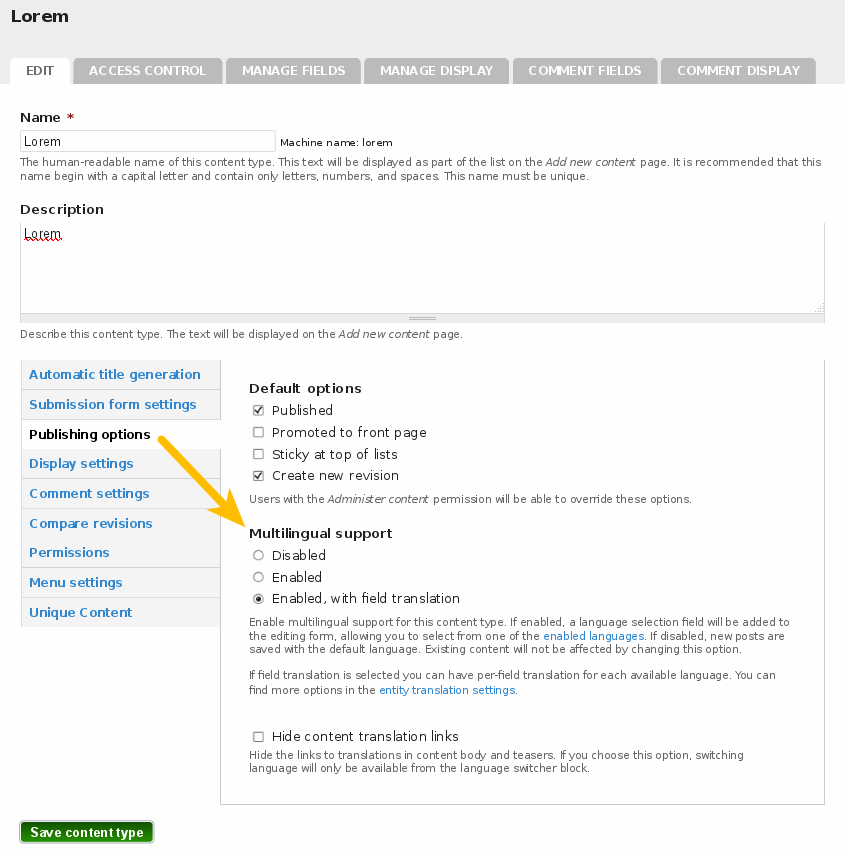

This Drupal 8 language module is one of the core modules located at core/modules/language. All the drupal translation modules can be configured at path /admin/config/regional Drupal Language Module Let’s catch up with what each drupal translation module does, its configurations and how each module can be used in our Drupal website.įirstly, you need to enable all the 4 core modules in your drupal site. The four core Drupal translation modules available : We can enable the required Drupal modules on our site and use it according to our requirements. It basically provides 4 different Drupal translation modules for language and content translation. Based on the option selected the site is installed in that particular language.
#Drupal entity tranlsations translate tab install
As soon as you install Drupal, based on the browser preference, it provides a language for your Drupal website.

Currently, Drupal 8 supports 100 different languages for translation.ĭrupal 8 multilingual features come along with the installation interfaces. Drupal 8 provides an easy and a great experience of building a drupal multilingual website. Multilingual websites connect better with users from different countries as it immediately adds an element of familiarity. Multilingual basically means written or available in different languages. Let's dive right in to learn more about the various multilingual Drupal modules. Powerful Drupal translation modules offer developers with granular configuration capabilities where every content entity can be translated. And with Drupal 8 being multilingual out-of-the-box, it has become an ideal choice for businesses and developers. Drupal CMS has particularly taken up this challenge of providing not only users but also developers with the ability to access Drupal in a language that they prefer. Not only is it a more cost-effective marketing strategy, but it also helps in increasing your website traffic and overall Drupal SEO.

Then set correct options at admin/structure/menu/settingsįor other menus or menu blocks use either the "languages" tab in block configuration or context module if you have it already on your site.Want an easy way to extend your market reach and ultimately your sales? Do you feel you need to personalize your website to every user no matter which country they belong to or what language they speak? Getting yourself a multilingual website is your best bet. You need to set the "Fixed language" option in this case.įor the main menu enable the "Source for the Main links" multilangual variable here : admin/config/regional/i18n/variable ES: / es/admin/structure/menu/manage/main-menu.FR: / fr/admin/structure/menu/manage/main-menu.Default site language : /admin/structure/menu/manage/main-menu.Remember to put the correct language prefix to see your menu for a given language. This has the advantage to set the correct language automatically. I can then translate (only) the label of these menu items in the "translate" tab in the edit form.įor the rest I go to each node edit form and use the "Provide menu link" option in the "Menu settings" tab. I first create the "language neutral" menu items if I have some that share the same path and position in the menu tree accross all languages on my site (like views or special menu items for example). In this case I have only one menu for all languages. I mainly use "translate and localize" option. Is thisįirst you can read the "Menu translation" section here : It's necessary to add the node to the menu structure again.


 0 kommentar(er)
0 kommentar(er)
